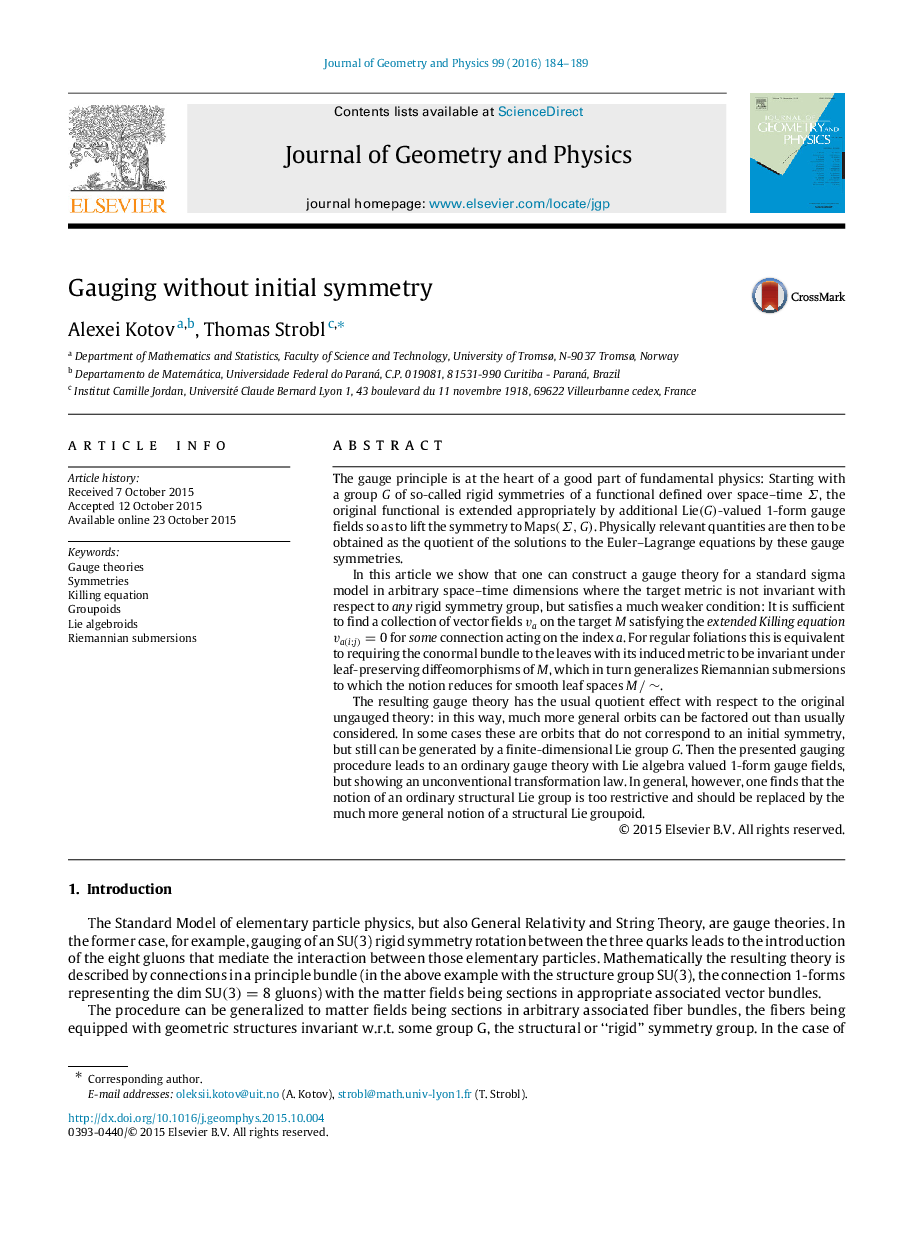| کد مقاله | کد نشریه | سال انتشار | مقاله انگلیسی | نسخه تمام متن |
|---|---|---|---|---|
| 1895494 | 1533739 | 2016 | 6 صفحه PDF | دانلود رایگان |
The gauge principle is at the heart of a good part of fundamental physics: Starting with a group GG of so-called rigid symmetries of a functional defined over space–time ΣΣ, the original functional is extended appropriately by additional Lie(G)-valued 1-form gauge fields so as to lift the symmetry to Maps(Σ,G). Physically relevant quantities are then to be obtained as the quotient of the solutions to the Euler–Lagrange equations by these gauge symmetries.In this article we show that one can construct a gauge theory for a standard sigma model in arbitrary space–time dimensions where the target metric is not invariant with respect to any rigid symmetry group, but satisfies a much weaker condition: It is sufficient to find a collection of vector fields vava on the target MM satisfying the extended Killing equation va(i;j)=0va(i;j)=0 for some connection acting on the index aa. For regular foliations this is equivalent to requiring the conormal bundle to the leaves with its induced metric to be invariant under leaf-preserving diffeomorphisms of MM, which in turn generalizes Riemannian submersions to which the notion reduces for smooth leaf spaces M/∼M/∼.The resulting gauge theory has the usual quotient effect with respect to the original ungauged theory: in this way, much more general orbits can be factored out than usually considered. In some cases these are orbits that do not correspond to an initial symmetry, but still can be generated by a finite-dimensional Lie group GG. Then the presented gauging procedure leads to an ordinary gauge theory with Lie algebra valued 1-form gauge fields, but showing an unconventional transformation law. In general, however, one finds that the notion of an ordinary structural Lie group is too restrictive and should be replaced by the much more general notion of a structural Lie groupoid.
Journal: Journal of Geometry and Physics - Volume 99, January 2016, Pages 184–189
